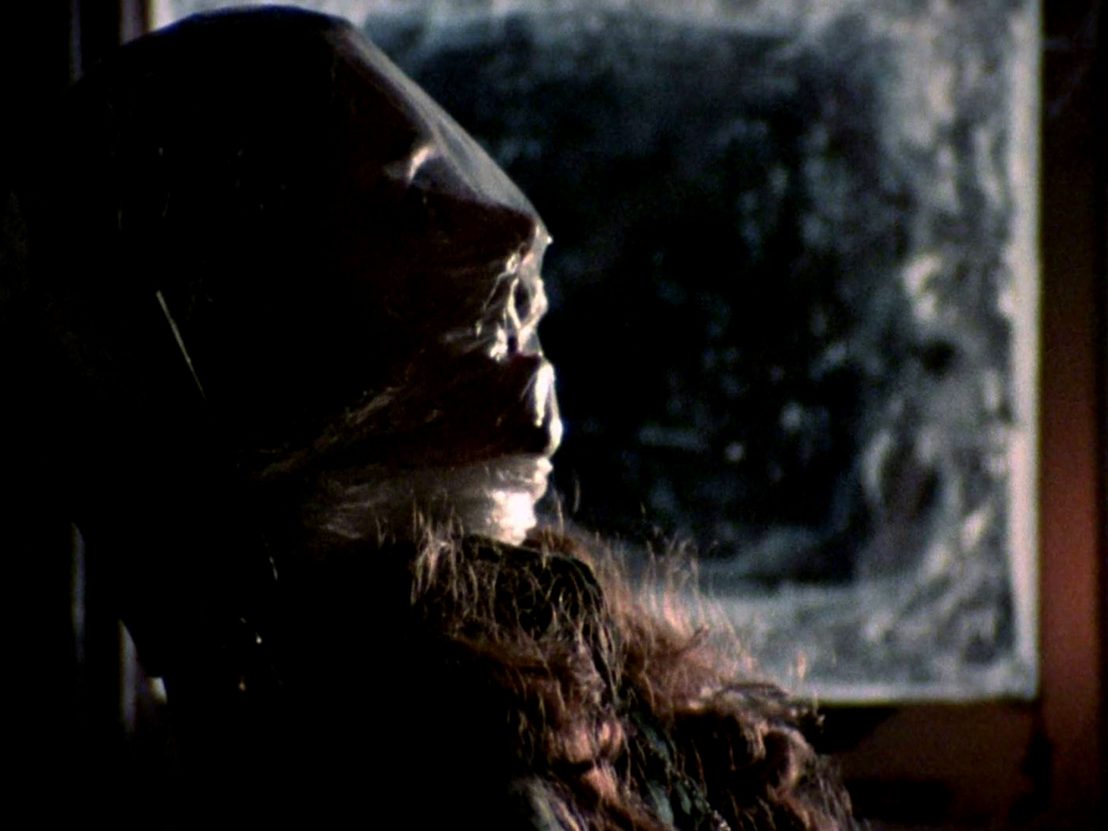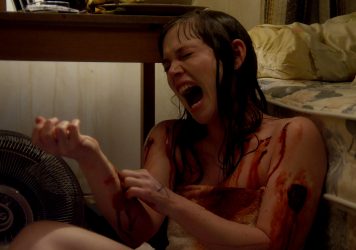
Black Christmas (aka Silent Night, Evil Night and Stranger in the House) opens with exteriors of the snowy Pi Kappa Sigma sorority house festooned with Christmas lights at night, as a POV shot (accompanied by heavy breathing) circles in search of a way in before climbing a trellis on the outer wall to the attic window above, as the young women and their male guests party downstairs, oblivious to this home invasion.
If the subjective cinematography, the calendar setting, and the co-ed body of victims, plus the manic cold caller, the succession of grisly murders, the climactic game of cat and mouse played by ‘final girl’ Jess (Olivia Hussey) in the building’s basement, and even the presence of figures in hockey mask and ski masks, all seem like the hackneyed ingredients of a classic slasher, in fact this film from Bob Clark (director of Children Shouldn’t Play with Dead Things, Death Dream, and Porky’s) was unwittingly laying down all the conventions for a subgenre that did not yet exist.
It would be another four years before John Carpenter made Halloween, very much under the influence of Black Christmas. Clark and his screenwriter A Ray Moore had only Alfred Hitchcock’s Psycho, Michael Powell’s Peeping Tom, the ’60s urban myth of the babysitter and the man upstairs, and Italy’s gialli, to guide them in their invention of the tropes that would come to dominate the horror landscape of the late ’70s and ’80s.
The idea of the creepy pest caller who is actually inside the house also inspired Fred Walton’s When a Stranger Calls – but note the way that Black Christmas integrates this into its yuletide theme, as killer ‘Billy’ keeps climbing down into the house’s interior like a dark version of Santa Claus, meting out punishments to the naughty and the nice alike. His own backstory – a highly dysfunctional home life of guilt-ridden incest and maternal dominance – is conveyed entirely by his unnervingly deranged rantings down the phone line (in a schizophrenic psychodrama of multiple voices).
Meanwhile the anti-Christmas theme continues in a subplot that sees Jess contemplating getting an abortion during the holiday that celebrates miraculous birth – and the baby’s father, neurotic concert pianist Peter (Keir Dullea), is as much suspect as support.
Black Christmas is better than your average slasher, not least because of its cast and characters, including Margot Kidder as a sybaritic student, Marian Waldman as the dipsomaniac ‘house mother’, and John Saxon as a street-smart police lieutenant. Scenes in which a technician traces a call by quite literally walking through the maze of physical connections at the telephone exchange certainly date the film, but are also part of its immense charm. Made at a time when there were as yet no fixed rules for the slasher subgenre, here anything goes, and the survival of neither virgin nor even final girl comes guaranteed.
Black Christmas is released on Blu-ray by 101 Films on 20 November.
Published 13 Nov 2017

By Anton Bitel
The director’s newly-restored 1982 film continues to stand the test of time.

By Matt Turner
The Finals Girls showcases exciting female voices in genre cinema.

By Adam White
Wes Craven’s seminal 1996 film occupies a uniquely female space.